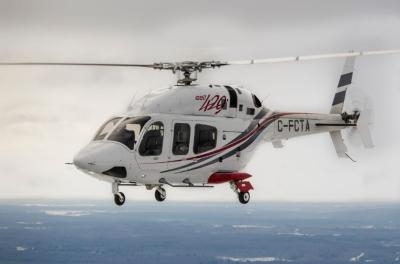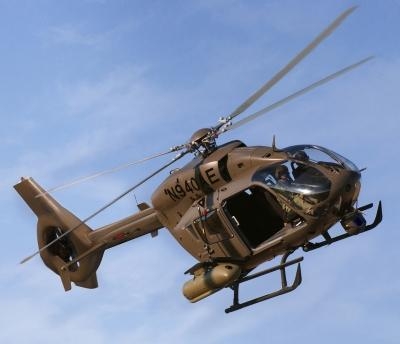Thu, Dec 19, 2013
Civil Market Flourishes, Supports A Broader Range Of Industries
As Department of Defense (DoD) budgets tighten, military services will be forced to spend less on helicopters, according to new analysis released by Frost & Sullivan. The declining budget is also driving trends of upgrading and remanufacturing existing platforms rather than funding new helicopter programs. Conversely, the civil helicopter market has rebounded after the 2008-2009 recession that resulted in a lack of financing to support civil helicopter purchases. The improving U.S. economy has allowed for recapitalization of old aircraft as well as new purchases to support growing demand from industries such as emergency medical services, oil and gas.

Frost & Sullivan finds the DoD spent $12.41 billion on military helicopters in 2012 and estimates this to decrease to $6.70 billion in 2018. The U.S. civil helicopter purchases, on the other hand, generated about $0.89 billion in 2012, and this is estimated to increase to $1.07 by 2020.
The need to replace equipment that is worn from years of constant deployment and harsh environments is the top driver in the military helicopter market, while recapitalizing a fleet with an average age of 24 years is what is driving the U.S. civil helicopter market. "Due to constant use in combat, combat support operations, and humanitarian missions, many existing military airframes will reach their service lives between 2030 and 2040. Some Vietnam Era aircraft, like the CH-47 Chinook and the UH-1 Huey fleets, are nearly 50 years old," said Frost & Sullivan Aerospace and Defense Senior Industry Analyst Michael Blades. "The civil fleet is not nearly as old as the military fleet, but a lack of used aircraft is driving the sales of new platforms."
The most significant challenge the U.S. DoD helicopter market faces is future budget constraints and threat of a prolonged period of sequestration. Likewise, though the market is projected to grow, overall uncertainty in the U.S. economy is restraining the country's civil helicopter market. "Upgrades and remanufactured platforms will continue to dominate spending for the military helicopter market, and new programs will favor modifying commercial-off-the-shelf aircraft rather than developing aircraft from the ground up," observed Blades. "In both the civil and military markets, end users will stress on total life cycle costs rather than acquisition costs."
Therefore, helicopter manufacturers are focusing more on efficiency and ease of maintenance in order to reduce repair costs and logistical tails.

More News
Outboard Section Of The Right Wing And The Right Flap Separated In Flight And The Airplane Impacted A Farm Field Analysis: The pilot was approaching his destination airport under i>[...]
Final Approach Fix The fix from which the final approach (IFR) to an airport is executed and which identifies the beginning of the final approach segment. It is designated on Gover>[...]
"Our choice of when to respond, how to respond and on which targets to respond is a consideration that we make every time... Netanyahu also noted that anyone attacking Israel &ldqu>[...]
Estimated (EST) When used in NOTAMs “EST” is a contraction that is used by the issuing authority only when the condition is expected to return to service prior to the e>[...]
Aero Linx: Coalition of Airline Pilots Associations (CAPA) The Coalition of Airline Pilots Associations (CAPA) is the world’s largest pilot trade association representing ove>[...]
 NTSB Final Report: Cessna 177B
NTSB Final Report: Cessna 177B ANN's Daily Aero-Term (05.08.25): Final Approach Fix
ANN's Daily Aero-Term (05.08.25): Final Approach Fix Aero-News: Quote of the Day (05.08.25)
Aero-News: Quote of the Day (05.08.25) ANN's Daily Aero-Term (05.09.25): Estimated (EST)
ANN's Daily Aero-Term (05.09.25): Estimated (EST) ANN's Daily Aero-Linx (05.09.25)
ANN's Daily Aero-Linx (05.09.25)




